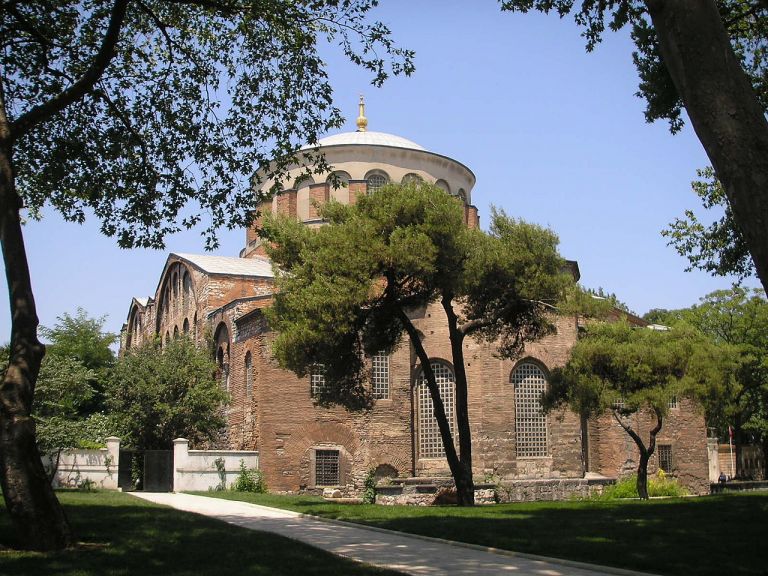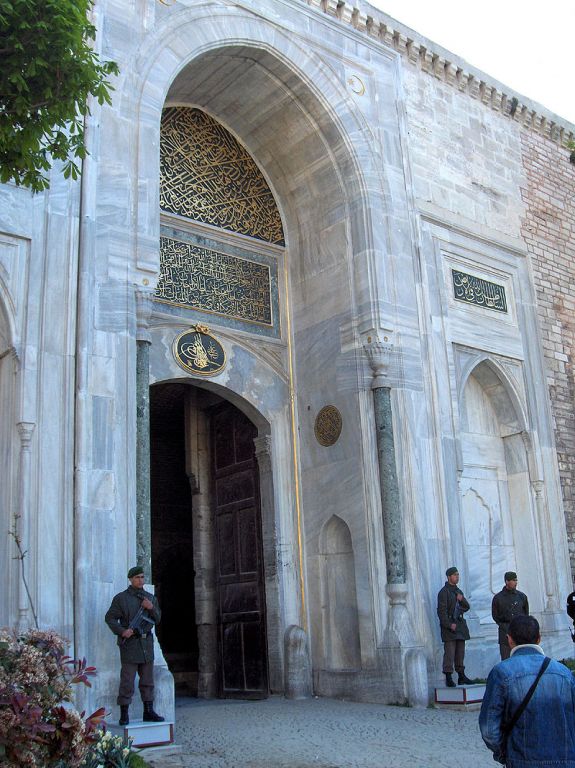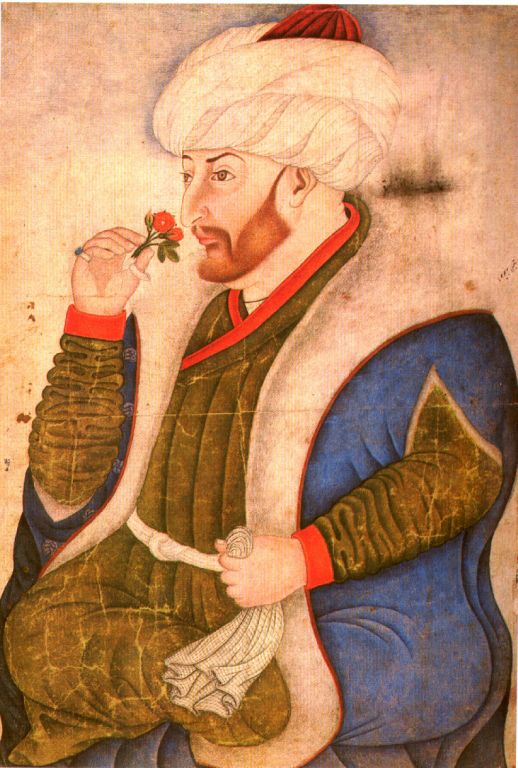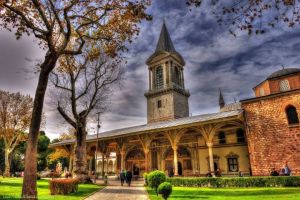İstanbul The Palace of Topkapi
The Palace of Topkapi
Topkapı Palace is a magnificent palace located in the historic peninsula of Istanbul and is one of the significant palaces of the Ottoman Empire. Built by Sultan Mehmed II in 1465, the palace was completed in 1478. Initially conceived as a residence, Topkapı Palace evolved over time to become the administrative and political center of the Ottoman Empire, undergoing expansions and additions to its structures. With its four courtyards and various buildings, the palace encompasses essential administrative sections like the Divan-ı Hümayun (Imperial Council), Arz Odası (Audience Chamber), and Hazine (Treasury). The Harem section hosted the private life of the imperial family, while the Arzhane displayed the Sacred Relics. Now serving as a museum, Topkapı Palace offers visitors the opportunity to explore the rich history, art, and sacred relics of the Ottoman Empire. It stands out as a historical masterpiece shaping Istanbul's silhouette.
Topkapı Palace History
The historical significance of Topkapı Palace lies in its role as a central hub throughout the history of the Ottoman Empire. Constructed between 1465 and 1478 by Sultan Mehmed II after the conquest of Istanbul, the palace served as the residence of Ottoman sultans and the administrative center of the state. Witnessing key political, cultural, and social events at the peak of the Ottoman Empire, the palace hosted crucial decisions. Today, as a museum, Topkapı Palace reflects the rich cultural heritage of the Ottoman Empire.
Location of Topkapı Palace
Situated on the historic peninsula of Istanbul, Topkapı Palace is located on the shores of the Marmara Sea, close to Sultanahmet Square. Positioned in the heart of Sultanahmet, a historic and touristic district, the palace enjoys a strategic location, easily accessible to significant tourist and cultural areas.
Features of Topkapı Palace
- Strategic Location: The palace is strategically located near Sultanahmet Square, along the coast of the Marmara Sea in the historic peninsula of Istanbul.
- Example of Ottoman Architecture: Topkapı Palace showcases beautiful examples of Ottoman architecture, including domed structures, decorations, and the overall design reflecting the architectural style of the period.
- Rich Decorations and Details: The interior and exterior of the palace are adorned with rich decorations, mosaics, and miniatures, reflecting the grandeur of Ottoman art.
- Harem Section: The most special and mysterious part of the palace, the Harem, serves as the residence for the imperial family. It consists of interconnected rooms reflecting the general architecture of Topkapı Palace.
- Arzhane and Sacred Relics: The Arzhane section serves as the display area for the Sacred Relics, including items associated with Prophet Muhammad and other prophets.
- Panoramic View: Due to its elevated position, the palace offers panoramic views of the surrounding Marmara Sea, Istanbul Strait, and the Golden Horn.
Sections of Topkapı Palace:
Divan-ı Hümayun (Imperial Council):
- Function: The highest executive unit of the Ottoman State where state affairs were discussed and decisions were made.
- Features: Divan-ı Hümayun includes a large hall where the Sultan managed government affairs and where viziers and state dignitaries gathered.
Arz Odası (Audience Chamber):
- Function: A room where the Sultan conducted his daily affairs and listened to the problems of the people.
- Features: The Audience Chamber was used by the Sultan to manage daily affairs and address the problems of the people, serving as a room for both official and informal purposes.
Hazine (Treasury):
- Function: A section containing the treasures of the Ottoman Empire.
- Features: The Treasury housed the wealth and valuable objects of the Ottoman Empire, including gold, silver, jewelry, and precious items.
Harem:
- Function: A private section reserved for the Sultan's family.
- Features: The Harem includes a series of rooms dedicated to the Sultan's mother, wives, children, concubines, and servants. It is a complex where private life unfolds and events are organized.
Arzhane:
- Function: An area where Sacred Relics are exhibited.
- Features: The Arzhane section is a space where Sacred Relics associated with Prophet Muhammad and other prophets are displayed, providing visitors with the opportunity to see historically and religiously significant objects.
Topkapı Palace Museum:
Topkapı Palace, reflecting the pinnacle of the Ottoman Empire's power, now serves as a museum. It showcases various art pieces, jewelry, weapons, manuscripts, and other historical objects from the Ottoman period, offering insight into the rich cultural heritage of the empire.
- Collections: The palace exhibits art pieces, jewelry, weapons, manuscripts, and other historical objects from the Ottoman era, reflecting the rich cultural heritage of the Ottoman Empire.
- Arzhane: This significant part of the palace is where Sacred Relics are displayed, including items associated with Prophet Muhammad and other prophets.
- Panoramic Views: Due to its elevated location, the palace provides commanding views of the Marmara Sea, Istanbul Strait, and the Golden Horn.
Topkapı Palace Harem
The Harem, the most special and mysterious section of Topkapı Palace, serves as a private area for the Sultan's family.
Structure and Room Count: The Harem consists of interconnected rooms, each serving a specific purpose for the Sultan's mother, wives, children, concubines, and servants. In line with the general architecture of Topkapı Palace, the Harem showcases examples of Ottoman architecture.
Visitor Access: As the Harem is a private area, access for visitors is provided for an additional fee. However, guided tours are organized to provide visitors with detailed information about the historical and cultural significance of the Harem.
Topkapı Palace Virtual Tour
For those interested in exploring Topkapı Palace virtually, there are several online resources and virtual tour options.
- Official Website: The official website of Topkapı Palace or other official sources may provide virtual tours or interactive visual materials.
- Google Arts & Culture: The Google Arts & Culture platform offers virtual tours of many museums worldwide. You can find the virtual tour of Topkapı Palace on this platform.
- YouTube and Other Video Platforms: Video tours of Topkapı Palace, created by various users, can be found on YouTube or other video platforms.
- Virtual Tour Applications: Some virtual tour applications may offer virtual tours of museums and historical sites. Using these applications, you can explore Topkapı Palace from the comfort of your home.
- Online Museum Resources: Various online museum resources may offer virtual tours, interactive exhibitions, and other visual materials to experience Topkapı Palace.
Virtual tours provide an effective way to experience the atmosphere and details of a place. By using these resources, you can immerse yourself in the rich history and cultural heritage of Topkapı Palace in a virtual environment.
Topkapı Palace Artifacts:
Topkapı Palace houses numerous valuable artifacts, representing the pinnacle of Ottoman cultural heritage. Some notable artifacts include:










Değerlendirmeler